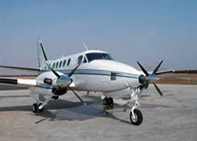The technology could soon facilitate ramjets, and in two decades, fliers could reach New York in around two hours from New Delhi, according to Dinesh Keskar, Senior Vice- President, Asia Pacific and India, Boeing. Frequent fliers to the US city could now look forward to the flight duration getting cut down soon. Boeing and NASA have reportedly partnered to develop supersonic and hypersonic planes.
Keskar said that Boeing worked on the research and development for the required technology and was studying the engine propulsion requirements. He added that all the aeroplanes at present were subsonic, which meant that they fly below the speed of sound. The biggest challenge in building hypersonic-and-supersonic planes was the engine propulsion, where the R&D was going on. Keskar highlighted the use of data analytics for studying engine propulsions.
Boeing had reportedly first unveiled its plan on developing hypersonic planes at the Aviation and Aeronautics Forum 2018, where it was reiterated that the company was working on designing, developing and flying experimental hypersonic vehicles.
The use of such planes at a mass scale could take around two decades. Boeing, however, feels that the prototype could be usable in five to ten years. According to the company’s plans, their hypersonic plane can travel at a speed of Mach 5 or 6,125 km/hour. This would help the aircraft to cross the Atlantic Ocean in two and the Pacific Ocean in three hours. Keskar further stated that the idea was to make such planes affordable for fliers.
Meanwhile, Boeing, Aerion Supersonic, Boom Supersonic, and Spike Aerospace are reportedly planning supersonic planes with speed in the range of Mach 1.6 to 2.2, and all of these envisage flying their first flight in 2023.
Keskar highlighted that soon artificial intelligence (AI) and robotics could be of crucial significance in the aviation sector. He stated that 3-D printing technology was being used currently at a smaller scale. He highlighted that soon, a complete aircraft could be built with 3-D in the future.







Leave a Reply
You must be logged in to post a comment.